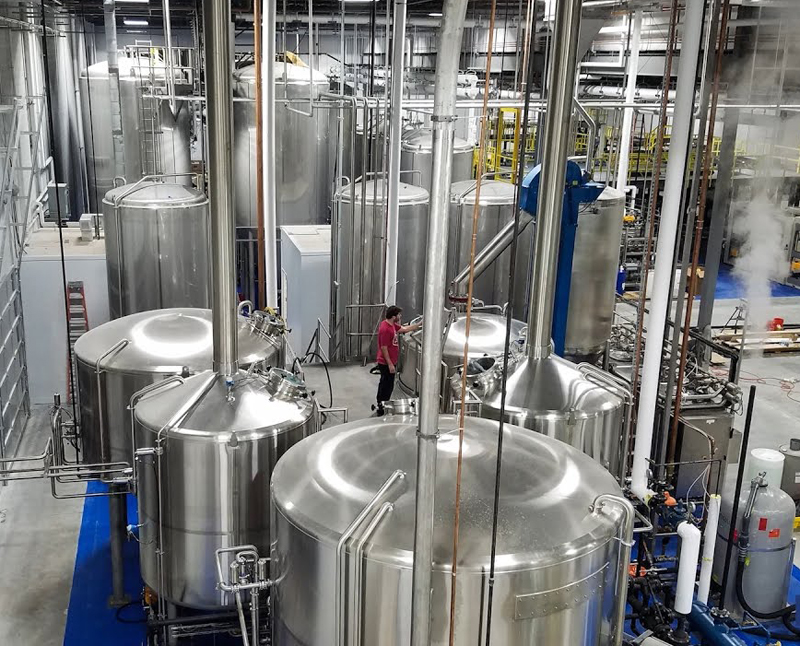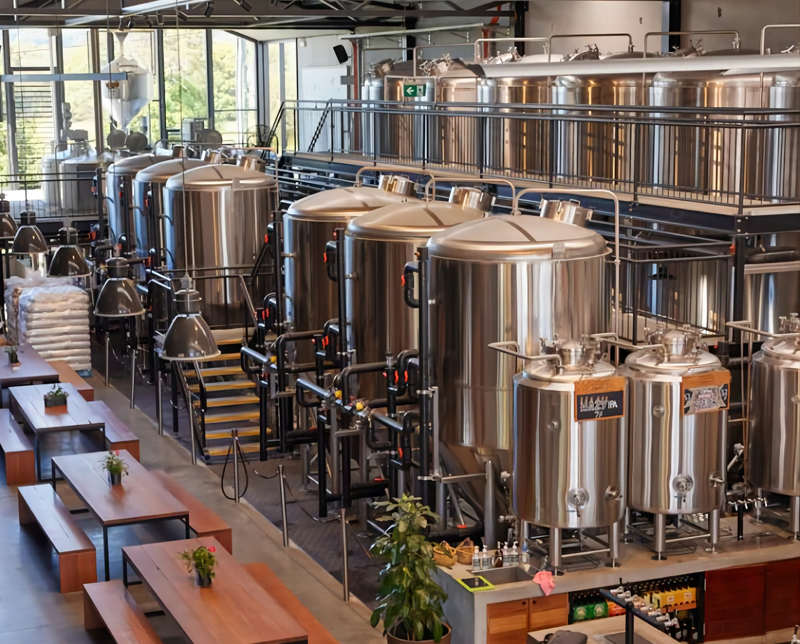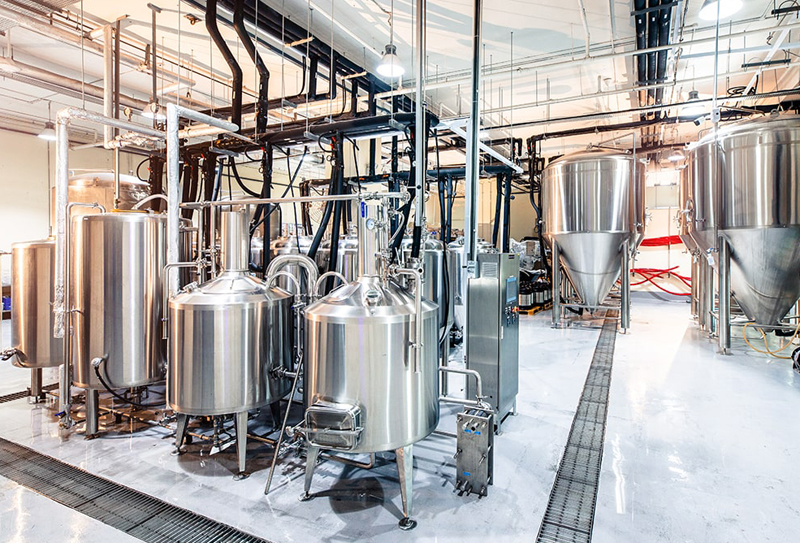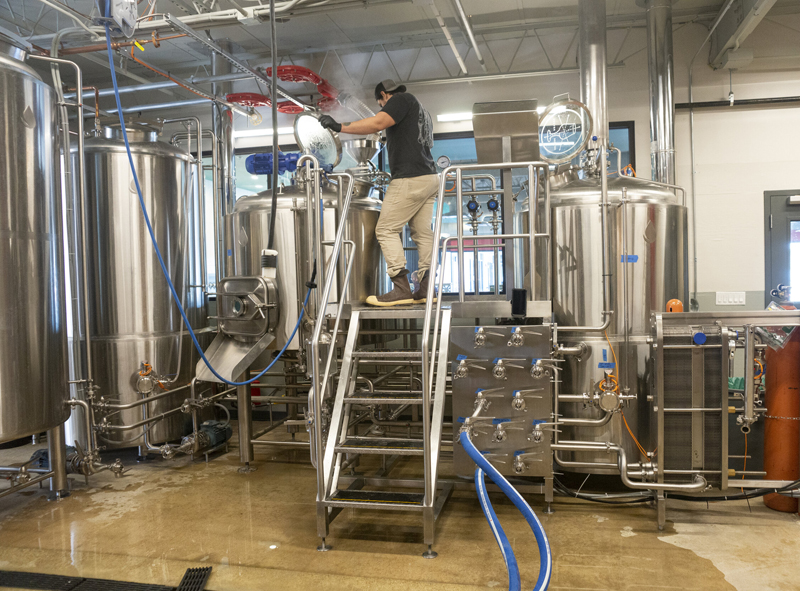In the dynamic and ever-evolving world of brewing, mastering the art of calculating brewery capacity is crucial for success. Brewery capacity serves as the heartbeat of any brewing operation, dictating how much beer can be produced within a given time frame. From small craft breweries to large-scale production facilities, understanding and effectively managing brewery capacity is essential for meeting market demand, optimizing production efficiency, and planning for future growth. In this comprehensive guide, we will explore the intricacies of brewery capacity calculation, from the fundamental principles to advanced methodologies.
Whether you’re a seasoned brew master or an aspiring entrepreneur entering the brewing industry, this article will equip you with the knowledge and tools needed to navigate the complexities of brewery capacity calculation with confidence. So, let’s raise a glass to unlock the secrets of brewery capacity and unleash the full potential of your brewing operation.

Complete Guide
1.Understand Brewery Capacity
2.Factors Affecting Brewery Capacity
3.How To Calculate Brewery Capacity
4.Get A Turnkey Brewery Solution
1.Understand Brewery Capacity
Brewery capacity is the backbone of any brewing operation and represents the maximum amount of beer a brewery can produce in a given period. It’s not just about physical space or equipment size but encompasses a multi-faceted assessment of the brewery’s ability to effectively meet production demands. Here, we take a closer look at brewery capacity, exploring its definition, factors that influence it, and the various types of capacity breweries must consider.
1.1 What Is Brewery Capacity?
Brewery capacity is usually measured in barrels (bbl) or hectoliters (hl) and represents the maximum output a brewery can achieve under optimal conditions. It covers the entire brewing process, from the intake of raw materials to the packaged product ready for distribution. Brewery capacity is not static and fluctuates based on a variety of factors including equipment efficiency, production schedules, and operational constraints. Understanding and effectively managing brewery capacity helps breweries meet market demand, optimize resource utilization, and plan for future growth.
1.2 Factors Affecting Brewery Capacity
Several factors influence a brewery’s capacity, from physical infrastructure to operational efficiency. Key factors include:
Equipment Efficiency: The size, capacity, and efficiency of brewery equipment significantly affect a brewery’s capacity. Factors such as brewery size, fermentation vessel capacity, packaging line speed, and equipment maintenance protocols all play a role in determining a brewery’s throughput.
Brewing Process Duration: The duration of each stage of the brewing process, from mashing and boiling to fermentation and packaging, affects the overall brewery capacity. Knowing how long each step takes can help breweries optimize production plans and maximize output.
Raw Material Availability: The availability of raw materials, including malt, hops, yeast, and water, affects brewery capacity. Fluctuations in feed stock supply, quality, and cost can impact throughput and scheduling decisions.
Production Planning: Efficient production planning, including the number of brewing cycles per day, week, or month, plays a vital role in a brewery’s capacity. Balancing production with market demand and resource availability helps maximize capacity utilization.
taffing and Skill Levels: The availability of technicians and their efficiency in performing brewing tasks affects a brewery’s capacity. Well-trained employees optimize processes, reduce errors, and increase overall productivity.
Operational Constraints: Various operational constraints, such as staffing levels, facility layout, regulatory compliance, and environmental considerations, can impact a brewery’s capacity. Identifying and addressing these limitations can help optimize brewery performance and efficiency.
1.3 Brewery Capacity Type
There are three main types of brewery capacity that breweries consider when planning and managing production:
Actual Capacity: Actual capacity represents the maximum output a brewery can achieve under current operating conditions, taking into account factors such as equipment efficiency, downtime, and staffing levels. It provides a realistic estimate of a brewery’s production capacity and is used in daily planning and decision-making.
Theoretical Capacity: Theoretical capacity represents the ideal maximum output that a brewery can achieve under perfect operating conditions, without any constraints or limitations. While theoretical capacity can serve as a baseline for performance evaluation and capacity optimization efforts, it may not always match actual conditions due to various operational constraints.
Future Capacity: Future capacity considers the brewery’s potential for expansion or optimization efforts. It involves forecasting future production needs, investing in additional equipment or infrastructure, and planning for growth in market demand.
Understanding these different types of brewery capacity allows a brewery to evaluate its current capabilities, identify areas for improvement, and effectively plan for future growth. By considering the factors that affect brewery capacity and employing various capacity calculation methods, breweries can optimize their operations, meet market demand, and thrive in the highly competitive beer industry.

2.Factors Affecting Brewery Capacity
Brewery capacity is the cornerstone of the brewing business and is affected by a variety of factors, each of which plays a key role in determining a brewery’s production capacity. Understanding these factors can help brewers optimize efficiency, meet market demands, and plan for future growth. Here, we take a closer look at the key factors that impact brewery capacity: equipment efficiency, brewing process duration, and production schedule.
2.1Equipment Efficiency
The efficiency of brewing equipment is a major determinant of brewery capacity. Many factors affect equipment efficiency, including:
Brewery Size and Configuration: The size and layout of the brewery determine the maximum amount of work that can be produced in a single batch. Larger breweries can accommodate larger volumes, resulting in greater production capacity per brewing cycle.
Fermentation Tank Capacity: The capacity of the fermentation tank determines the amount of beer that can be fermented at the same time. Having a sufficient number of fermentation vessels of the proper size ensures smooth fermentation and maximizes brewery capacity.
Packaging Line Speed: Packaging line speed and efficiency impact a brewery’s ability to package and distribute finished beer. Fast and reliable packaging equipment minimizes downtime and maximizes throughput, thereby increasing overall brewery capacity.
Equipment Maintenance and Downtime: Regular maintenance and minimizing downtime are critical to maximizing equipment efficiency. Preventive maintenance programs and efficient repair protocols help minimize production interruptions and ensure optimal equipment performance.
2.2Brewing Process Duration
The duration of each stage in the brewing process significantly affects the overall brewery capacity. Key factors that influence the duration of the brewing process include:
Mashing and Boiling Times: The time required for mashing and boiling varies based on factors such as recipe complexity and equipment efficiency. Efficient mashing and boiling processes help simplify production and shorten the duration of the entire process.
Fermentation and Conditioning Time: Fermentation and conditioning are critical stages and should not be rushed. The duration of fermentation and conditioning depends on factors such as yeast strain, beer style, and desired flavor profile. Optimal fermentation and conditioning times ensure high-quality beer production while maximizing brewery capacity.
Packaging: The time required for packaging (including filling, labeling, and packaging) affects a brewery’s ability to effectively package finished beer. Efficient packaging operations minimize turnaround times and increase brewery throughput by reducing bottlenecks in the production process.
2.2 Production Plan
Production planning determines the frequency and timing of brewing cycles, directly affecting the brewery’s capacity. Key considerations for production scheduling include:
Number of Brewing Cycles: The number of brewing cycles per day, week, or month determines the overall production capacity of the brewery. Efficient scheduling ensures a balance between meeting demand and avoiding overproduction or underutilization of resources.
Batch Size and Turnaround Time: Optimizing batch size and turnaround time is critical to maximizing brewery capacity. Adjusting batch sizes to demand and minimizing downtime between batches helps maintain a stable production flow and maximize throughput.
Seasonal Changes and Demand Fluctuations: Forecasting seasonal changes and fluctuations in market demand can help complete effective production scheduling. Scheduling flexibility allows breweries to adapt to changing demand patterns and optimize capacity utilization throughout the year.
By carefully managing equipment efficiency, optimizing brewing process duration, and implementing strategic production scheduling, brewers can maximize brewery capacity and meet the dynamic demands of the market. Understanding these factors enables brewers to make informed decisions and drive continuous improvement in their brewing operations.

3.How To Calculate Brewery Capacity
Calculating brewery capacity involves using a variety of methods and metrics to accurately assess a brewery’s production capacity. By understanding these methods, brewers can optimize their operations, effectively plan production schedules, and make informed decisions about future expansion. Here are the main ways to calculate brewery capacity:
3.1 Actual Ability
Actual capacity represents the maximum production a brewery can realistically achieve under current operating conditions. It takes into account factors such as equipment efficiency, staffing levels, maintenance schedules, and production constraints. To calculate actual production capacity, brewers typically evaluate:
Equipment Efficiency: Evaluate the efficiency and throughput of brewery equipment, including brewhouse equipment, fermentation vessels, and packaging lines. Consider factors such as equipment downtime, maintenance requirements, and production speed.
Staffing and Skills: Assess the availability and skill levels of brewery personnel. Consider how staffing levels and skill sets impact productivity and overall capacity utilization.
Production Constraints: Identify any operational constraints or bottlenecks that may limit production capabilities. This may include constraints on raw material availability, storage space, or facility layout.
Actual capabilities provide a realistic baseline for assessing a brewery’s current capabilities and identifying opportunities for improvement.
3.2 Theoretical Ability
Theoretical capacity represents the maximum output achievable under perfect operating conditions without any limitations. It is an ideal benchmark for assessing a brewery’s performance and potential. To calculate theoretical capacity, brewers consider:
Equipment Specifications: Determine the maximum throughput of your brewing equipment based on manufacturer specifications and design parameters.
Optimum Process Efficiency: Assumes ideal operating conditions including minimal downtime, optimal staffing levels, and efficient production processes.
No Production Constraints: Assume no constraints on raw material availability, storage space, or facility layout.
While theoretical competency may not be achievable in practice, it provides a valuable reference point for evaluating a brewery’s performance and identifying areas for improvement.
3.3 Utilization
Utilization is a measure of a brewery’s actual output as a percentage of its maximum capacity during a specific period. It provides insights into how a brewery can effectively utilize its resources and equipment. To calculate utilization, brewers:
Determine Actual Production: Calculate the total amount of beer produced during a given period.
Calculate Maximum Capacity: Determine the actual or theoretical capacity of the brewery for the same period.
Actual Production Divided by Maximum Capacity: Divide actual production by maximum capacity and multiply by 100 to calculate utilization.
Utilization helps breweries identify operational inefficiencies, optimize production plans, and maximize overall capacity utilization.
3.4 Future Expansion
Future expansion involves anticipating and planning for increases in brewery capacity to meet growing demand or strategic goals. This includes:
Demand Forecast: Forecast future market demand and consumption trends to provide information for capacity expansion plans.
Infrastructure Investment: Evaluate whether additional equipment, facilities, or resources are needed to support increased production capacity.
Risk Management: Assess potential risks and challenges associated with capacity expansion, such as capital investment, market volatility, and regulatory compliance.
By considering future expansion needs, breweries can proactively plan and invest in the infrastructure and resources needed to support continued growth and success.
By employing these methods to calculate brewery capacity, breweries can gain valuable insights into their operations, optimize production efficiency, and effectively plan for future growth and expansion. Whether assessing current capabilities or planning for future needs, understanding a brewery’s capabilities can help you succeed in the dynamic and competitive beer industry.

Summary
In summary, calculating brewery capacity is a multifaceted process that requires careful consideration of a variety of factors, including equipment efficiency, production processes, and future expansion plans. By understanding the basic principles of brewery capacity calculations and using various methods such as actual capacity, theoretical capacity, and utilization, breweries can gain insights into their production capabilities and optimize operations to effectively meet market demand.
Optimization strategies such as equipment optimization, production planning optimization, process efficiency improvements, and future expansion planning are critical to maximizing brewery capacity, increasing productivity, and positioning breweries for long-term success in the highly competitive beer industry. Through a strategic approach to capacity calculation and optimization, brewers can unlock the full potential of their operations, drive growth, and continue to innovate in the dynamic and evolving craft beer market.
Post time: May-09-2024

